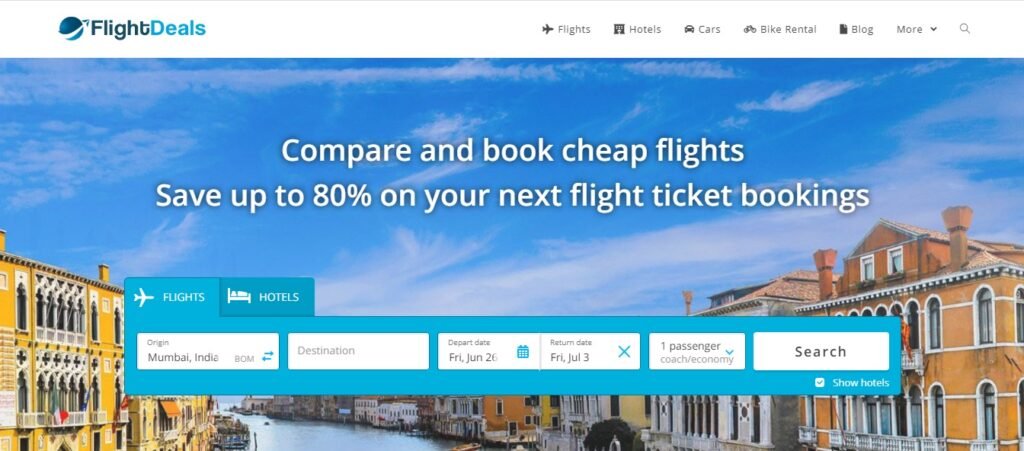As an on-page SEO expert in a leading company dedicated to organic traffic generation, unraveling the intricacies of user experience (UX) and interface design is critical in the competitive realm of the travel industry. In this comprehensive guide, we will embark on a journey to analyze the user experience and interface of travel websites. Throughout this exploration, we will seamlessly integrate a promotion for Sitefy’s travel websites, offering a turnkey solution for those seeking to elevate their online presence in the dynamic world of travel.
I. Introduction
A. The Essence of User Experience in Travel
In the digital age, where travelers seek seamless online experiences, understanding and enhancing user experience is paramount. As on-page SEO experts, our role extends beyond optimizing content for search engines to strategically assessing and improving the user journey on travel websites.
II. Promotion of Turnkey Solutions: Sitefy’s Travel Websites
A. Overview of Sitefy’s Offerings
- User-Centric Design: Emphasizing Sitefy’s commitment to providing travel websites with user-centric designs and features.
- Features for SEO Optimization: Highlighting features of Sitefy’s travel websites that empower affiliates to optimize content for search engines while ensuring an exceptional user experience.
B. Integration in Content
- Strategic Placement: Seamlessly integrating mentions of Sitefy’s travel websites within discussions on user experience and interface design, emphasizing their relevance to entrepreneurs seeking platforms ready for an optimized digital journey.
- Call to Action (CTA): Encouraging readers to explore the ready-made travel websites available on Sitefy as a practical choice for those prioritizing user experience and interface excellence.
III. Understanding User Experience in Travel Websites
A. Definition and Importance
- Defining User Experience (UX): Unpacking the elements that constitute a positive user experience on travel websites.
- Importance of Positive UX: Discussing how a positive UX directly correlates with increased engagement, longer time on site, and higher conversion rates.
B. The User Journey
- User Persona Development: Understanding the diverse user personas that interact with travel websites.
- Mapping the User Journey: Analyzing the typical user journey from landing on the site to completing a desired action.
IV. Key Elements of User-Friendly Interfaces
A. Intuitive Navigation
- Clear Navigation Menus: Discussing the importance of clear and intuitive navigation menus for ease of exploration.
- User-Friendly Search Functionality: Analyzing the role of search functionality in facilitating a seamless user experience.
B. Mobile Responsiveness
- Importance of Mobile Optimization: Discussing the prevalence of mobile users in the travel industry and the significance of mobile-responsive designs.
- Optimizing for Various Devices: Strategies for ensuring a consistent and user-friendly experience across different devices.
V. Visual Appeal and Design
A. Engaging Imagery
- High-Quality Visuals: Discussing the impact of high-quality images and visuals on user engagement.
- Consistent Branding: Analyzing the importance of maintaining consistent branding elements throughout the site.
B. Readability and Typography
- Clear Typography Choices: Discussing the role of clear and legible typography in enhancing readability.
- Contrast and Color Schemes: Analyzing the impact of contrast and color schemes on overall readability and user satisfaction.
VI. Interactive Elements and Engagement
A. Interactive Features
- Interactive Maps and Tools: Discussing the effectiveness of interactive maps and tools for engaging users.
- Personalization Options: Analyzing the benefits of incorporating personalization features for a tailored user experience.
B. Social Integration
- Social Media Connectivity: Discussing the role of social media integration in amplifying user engagement and brand reach.
- User-Generated Content Showcases: Strategies for showcasing user-generated content to enhance trust and engagement.
VII. SEO Optimization for Enhanced User Experience
A. Page Speed and Loading Times
- Optimizing for Quick Loading: Discussing the impact of page speed on user satisfaction and search engine rankings.
- Image Compression and Optimization: Strategies for optimizing images to improve loading times without compromising quality.
B. Mobile-First Indexing
- Prioritizing Mobile-Friendly Designs: Strategies for aligning designs with mobile-first indexing to enhance search engine visibility.
- Responsive Content Layouts: Ensuring that content layouts adapt seamlessly to different screen sizes for optimal user experience.
VIII. User Feedback and Iterative Improvements
A. Utilizing User Feedback
- Surveys and Feedback Forms: Implementing user surveys and feedback forms to gather insights for improvement.
- Analyzing Analytics Data: Utilizing analytics data to identify pain points and areas for enhancement in the user experience.
IX. Promotion of Turnkey Solutions: Sitefy’s Travel Websites (Reiteration)
A. Reinforcing Sitefy’s Role in Exceptional User Experiences
- User-Centric Features: Reiterating how Sitefy’s travel websites are equipped with user-centric features to enhance the overall user journey.
- Success Stories: Showcasing success stories of affiliates who have excelled in providing exceptional user experiences through Sitefy’s platforms.
X. Accessibility and Inclusivity
A. Catering to Diverse Audiences
- Designing for Accessibility: Discussing the importance of designing websites that cater to users with diverse abilities.
- Multilingual Support: Strategies for incorporating multilingual support to reach a global audience.
XI. Conclusion
In conclusion, analyzing the user experience and interface of travel websites is a strategic endeavor that demands a thorough understanding of user preferences, design principles, and continuous optimization. As on-page SEO experts, our dual responsibility is not only to optimize content for search engines but also to strategically assess and enhance the user journey for maximum impact. The promotion of Sitefy’s travel websites serves as a reminder that turnkey solutions are available for entrepreneurs seeking platforms ready for an optimized digital journey. By embracing user-centric designs, optimizing wisely, and continuously adapting strategies based on user feedback and industry trends, we can unlock the potential of exceptional user experiences in the competitive world of travel affiliate marketing. Embrace these strategies, analyze wisely, and embark on a journey toward a flourishing online presence through websites designed for an exceptional user experience in the travel industry.



